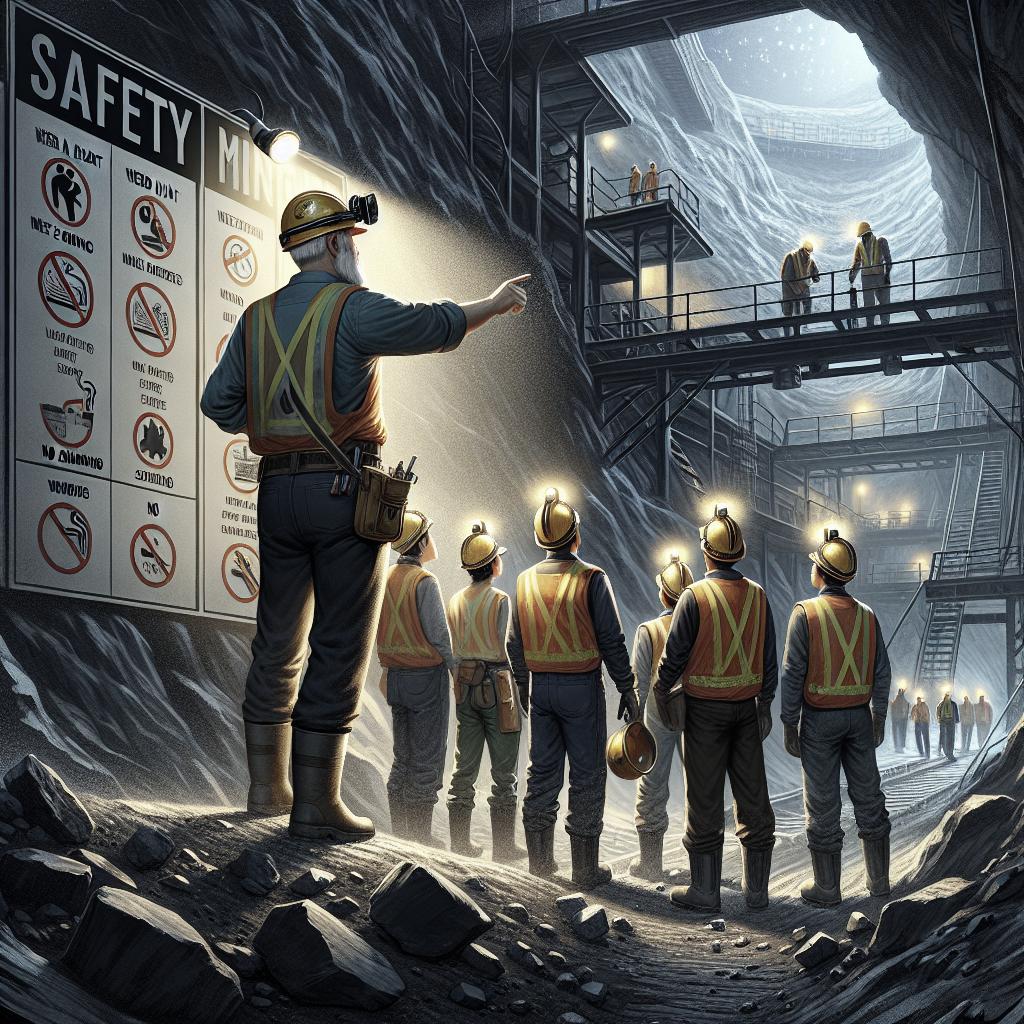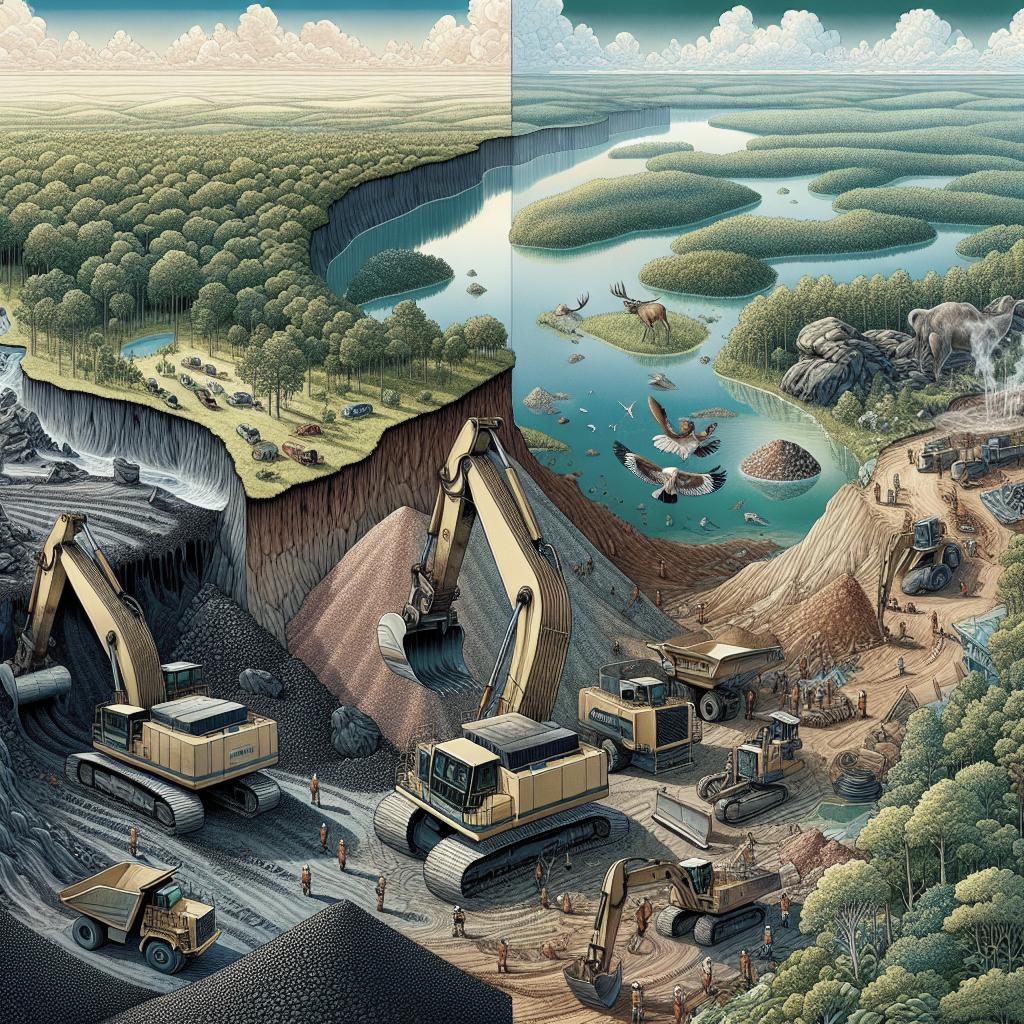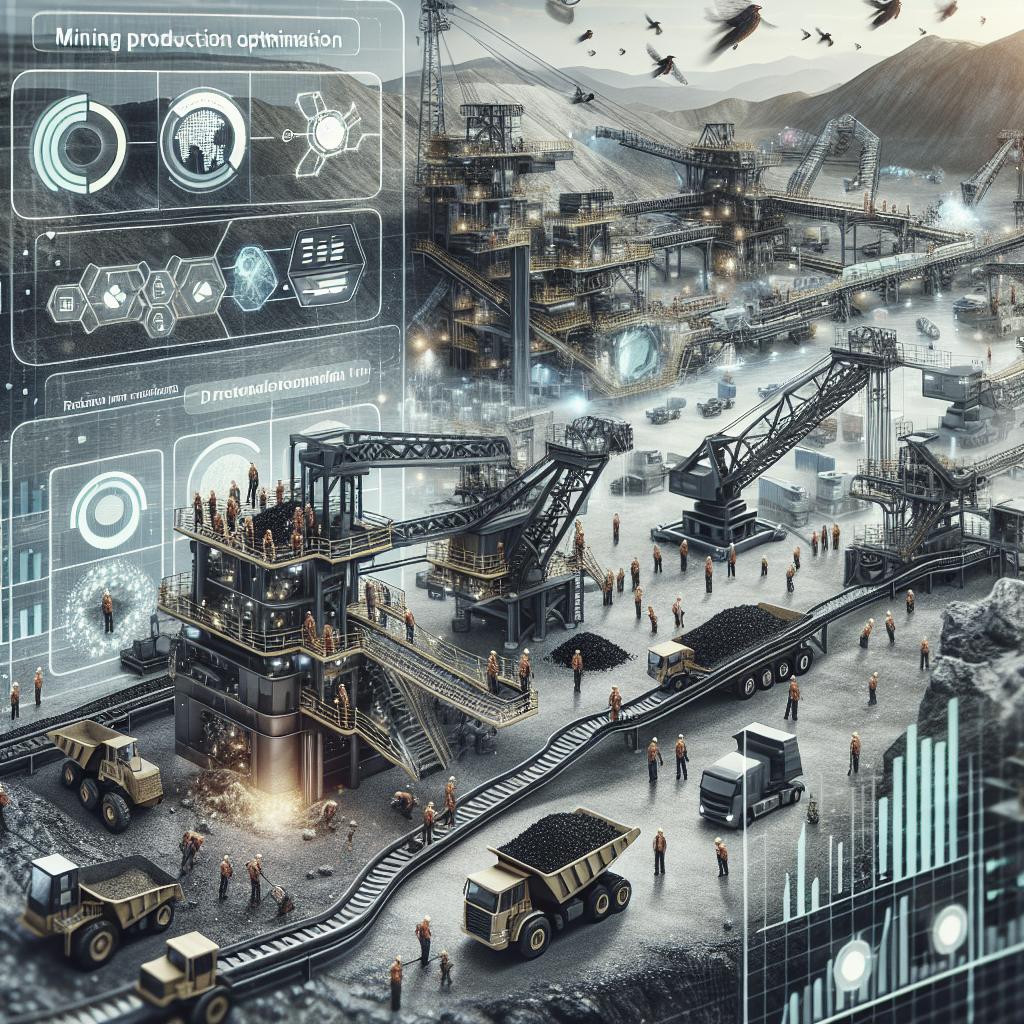<>
Mining operations are among the most hazardous industrial activities, making safety a paramount concern. This comprehensive guide provides insights into critical safety measures, covering aspects such as planning, equipment maintenance, visibility, personal protective gear, and training. By understanding and implementing these 18 strategies, mining companies can significantly reduce risks and create a safer working environment for their employees.1. Prioritize Planning
Effective safety in mining starts with meticulous planning. Developing comprehensive safety plans that outline potential hazards and response measures for various scenarios is crucial. These plans should be updated regularly to reflect changes in the working environment or new regulations. Involving experienced engineers and safety professionals in the planning process ensures that all possible safety considerations are addressed. Risk assessment is another vital component. Identifying potential hazards such as toxic gases, unstable rock formations, and ventilation issues helps in creating effective mitigation strategies. A systematic risk assessment process sets the foundation for a safer mining operation, proactively reducing the likelihood of accidents.
2. Maintain Rigorous Standards
Adhering to rigorous industry standards helps maintain a consistent safety culture. Compliance with national and international mining regulations, such as those set by the Occupational Safety and Health Administration (OSHA) and Mine Safety and Health Administration (MSHA), is non-negotiable. Regular audits and inspections ensure that safety protocols are followed, identifying areas needing improvement. Developing internal safety standards specific to your operation adds an extra layer of precaution. Tailored guidelines and protocols help address unique challenges faced by individual mining sites, ensuring comprehensive coverage of all potential hazards.
3. Wear Personal Protective Gear
Personal protective equipment (PPE) is the frontline defense against various hazards in mining. Ensuring that all workers are equipped with the appropriate PPE, such as helmets, gloves, goggles, and respiratory protection, is essential. Regularly inspecting and maintaining PPE ensures it remains effective and reliable. Educating workers on the correct usage and importance of PPE is equally important. Regular training sessions and reminders help reinforce the significance of PPE in preventing injuries and saving lives. Developing a culture where PPE usage is second nature can dramatically improve overall safety.
4. Pay Attention to Equipment Upkeep
The operability and safety of mining equipment significantly impact overall safety. Regular maintenance of machinery such as drills, conveyors, and transportation vehicles prevents malfunctions that could lead to accidents. Implementing a preventive maintenance schedule where equipment is inspected, serviced, and replaced as needed can keep operations running smoothly. In addition to scheduled maintenance, encourage workers to report any equipment issues immediately. Promptly addressing and rectifying machinery faults prevents minor problems from escalating into major safety hazards.
5. Improve Visibility
Good visibility is vital in preventing accidents, particularly in underground mining operations. Installing adequate lighting in all working areas, pathways, and tunnels can prevent trips, falls, and collisions. Reflective strips on machinery and workers’ uniforms also enhance visibility, especially in low-light conditions. Regularly assess and upgrade lighting systems as needed to adapt to the changing work environment. Investing in advanced lighting technologies like LED or motion-sensor lights can provide more efficient and effective illumination, ensuring that all potential hazards are well-lit and visible.
6. Take Lifting Precautions
Manual lifting and handling of heavy materials pose significant risks. Training workers on proper lifting techniques can prevent musculoskeletal injuries. Utilization of mechanical lifting aids such as forklifts and cranes should be encouraged to reduce the physical strain on workers. Ergonomic assessments of workstations and tasks can identify areas where lifting and handling can be improved. Regular reviews of lifting procedures and practices ensure that safety measures evolve with operational needs, maintaining a high standard of worker well-being.
7. Manage Vibration and Noise Levels
Continuous exposure to high vibration and noise levels can cause long-term health issues. Implementing measures to manage and mitigate these hazards is essential. Using vibration-dampening equipment and investing in noise-cancelling solutions can significantly reduce worker exposure. Providing workers with ear protection and limiting the duration of exposure to high-noise areas can further minimize health impacts. Regular monitoring of noise and vibration levels helps in promptly addressing any exceedance of safe limits.
8. Account for Harsh Temperatures
Extremely hot or cold working environments pose additional risks. Ensuring appropriate measures, such as climate control systems, can help maintain a comfortable and safe temperature range. Providing workers with suitable clothing to protect against extreme temperatures is equally important. Regular breaks in designated rest areas equipped with heating or cooling facilities help workers recover from temperature extremes. Educating workers on recognizing symptoms of heat stress or hypothermia ensures they can take prompt action if needed.
9. Ventilate Harmful Gases
Inadequate ventilation in underground mining can lead to the accumulation of harmful gases such as methane and carbon monoxide. Installing advanced ventilation systems that ensure the continuous circulation of fresh air can prevent dangerous build-ups. Regularly testing air quality and monitoring gas levels help in swiftly identifying and addressing any ventilation issues. Training workers to recognize signs of gas exposure and equipping them with portable gas detectors enhances safety. Established protocols for evacuation in the event of gas leaks ensure that workers know exactly what to do in an emergency.
10. Shut Down Old Shafts
Abandoned or old mine shafts pose significant risks, including collapse and toxic gas release. Ensuring these shafts are properly sealed and secured can prevent accidental entry and subsequent hazards. Conducting regular inspections of old shafts ensures any developing issues are promptly addressed. Marking and restricting access to non-operational areas within the mining site further enhances safety. Clear signage and physical barriers help in keeping workers informed and within safe operational zones.
11. Implement Rock Burst Prevention Measures
Rock bursts, sudden fractures of rock caused by high stress, can be devastating. Implementing measures such as stress-relieving blasting and rock bolting can mitigate these risks. Utilizing advanced monitoring systems to detect early signs of stress buildup allows for preventative action before a rock burst occurs. A thorough geological assessment of the mining area helps in identifying zones that are more susceptible to rock bursts. Reinforcing these areas with additional support systems can prevent catastrophic failures.
12. Stay Aware of Fire Risks
Fires in mining operations can be catastrophic. Implementing comprehensive fire prevention and response measures is crucial. This includes installing fire detection and suppression systems throughout the working areas. Training workers on fire evacuation procedures ensures swift and orderly exits in case of an emergency. Regular inspections of electrical systems and machinery to prevent sparks or overheating, combined with proper storage of flammable materials, significantly reduces fire risks. Fire drills help in keeping all personnel prepared and reactive.
13. Watch for Dust Hazards
Mining operations often generate significant amounts of dust, which can lead to respiratory issues. Implementing dust control measures, such as water sprays and dust suppression systems, helps in minimizing airborne particles. Providing workers with respiratory protection further reduces health risks. Regular monitoring of dust levels and conducting respiratory health assessments for workers ensure timely identification and mitigation of potential issues. Adhering to permissible exposure limits for dust particles is necessary to maintain a healthy work environment.
14. Keep Electrical Safety in Mind
Electrical hazards are prevalent in mining sites, necessitating strict adherence to safety protocols. Ensuring that all electrical installations are compliant with safety standards and regularly inspected prevents accidents. Using proper insulation and grounding techniques reduces the risk of electrical shocks and fires. Training workers on electrical safety, including the safe operation of electrically powered equipment, enhances overall safety. Clearly marking high-voltage areas and providing adequate warnings further mitigates risks.
15. Prepare for the Possibility of Slips and Falls
Wet and uneven surfaces are common in mines and can cause slips and falls. Implementing proper drainage systems and using anti-slip mats can mitigate these hazards. Regularly inspecting and maintaining pathways and working surfaces ensures they remain safe for traversal. Equipping workers with appropriate footwear that provides good traction and stability is essential. Conducting safety drills and educating workers on safe walking practices in the mine enhance their awareness and preparedness.
16. Consider the Potential for Cave-Ins
Cave-ins are one of the most severe risks in mining operations. Implementing robust support systems such as beams, pillars, and nets can prevent rockfalls and cave-ins. Regular geological assessments help in identifying areas at risk and reinforcing them accordingly. Emergency response plans tailored to cave-ins ensure that all workers know the protocol. Trapping simulations and drills keep workers prepared for swift action in case of an actual event.
17. Emphasize Communication
Effective communication is the backbone of mine safety. Implementing reliable communication systems such as two-way radios and intercoms ensures constant contact between workers and supervisors. Establishing regular safety meetings and briefings keeps everyone informed about potential hazards and safety updates. Encouraging a culture where workers feel comfortable reporting safety concerns without fear of reprisal enhances overall safety. Transparent and open communication channels ensure timely sharing and resolution of safety issues.
18. Take Advantage of Professional Training and Refreshers
Continuous training is essential for maintaining a high standard of safety. Providing regular professional training and refresher courses for all workers ensures they stay updated with the latest safety protocols and techniques. Specialized training for different roles and tasks within the mine is necessary for targeted safety education. Partnering with professional training organizations and safety experts can enhance the quality and relevance of training programs. Investing in ongoing education demonstrates a commitment to safety and continuous improvement.
Using Blast Mats to Improve Mine Safety
Blast mats are crucial in mitigating the impact of controlled explosions during mining. These mats contain flying debris and reduce shockwaves, protecting both workers and infrastructure. Utilizing high-quality blast mats specifically designed for mining ensures they provide maximum effectiveness. Regularly inspecting and replacing blast mats is necessary to maintain their integrity and performance. Educating workers on the correct deployment and maintenance of blast mats enhances their efficacy.
Contact TM International, LLC for Blast Mats
For reliable and durable blast mats, TM International, LLC provides a range of options tailored to mining needs. Their products are designed to enhance safety and efficiency during blasting operations, preventing accidents and minimizing damage. Contact TM International, LLC for expert advice and superior products to improve your mine’s safety measures.
Summary of Main Points
| Aspect | Key Measures |
|---|---|
| Prioritize Planning | Develop safety plans, involve experts, conduct risk assessments |
| Maintain Rigorous Standards | Comply with regulations, conduct audits and inspections |
| Wear Personal Protective Gear | Equip workers with PPE, provide regular training |
| Pay Attention to Equipment Upkeep | Implement maintenance schedules, encourage reporting of issues |
| Improve Visibility | Install adequate lighting, use reflective strips |
| Take Lifting Precautions | Train on proper techniques, use mechanical aids |
| Manage Vibration and Noise Levels | Use dampening equipment, provide ear protection |
| Account for Harsh Temperatures | Provide climate control, suitable clothing, and rest breaks |
| Ventilate Harmful Gases | Install ventilation systems, monitor air quality |
| Shut Down Old Shafts | Seal old shafts, restrict access to non-operational areas |
| Implement Rock Burst Prevention Measures | Use stress-relieving techniques, reinforce susceptible zones |
| Stay Aware of Fire Risks | Install detection systems, conduct fire drills |
| Watch for Dust Hazards | Implement dust control measures, provide respiratory protection |
| Keep Electrical Safety in Mind | Ensure compliant installations, train on safe operation |
| Prepare for the Possibility of Slips and Falls | Improve drainage, inspect pathways, provide proper footwear |
| Consider the Potential for Cave-Ins | Implement support systems, conduct regular geological assessments |
| Emphasize Communication | Install reliable systems, hold regular safety briefings |
| Take Advantage of Professional Training and Refreshers | Provide continuous training, partner with experts |
| Using Blast Mats to Improve Mine Safety | Use high-quality mats, ensure proper deployment |
By diligently following these guidelines, mining companies can create safer working environments, protecting the well-being of their workers and the integrity of their operations.


